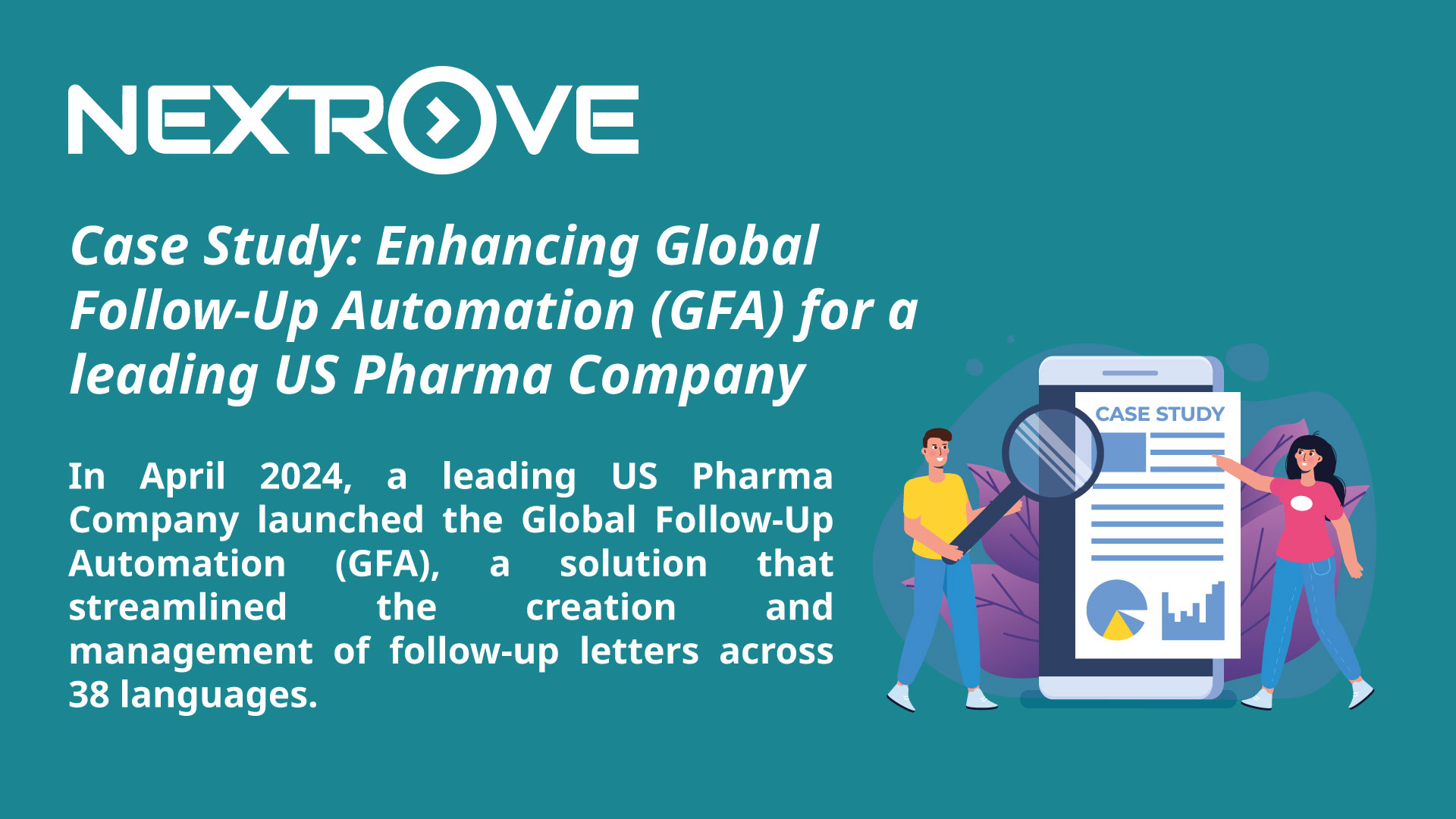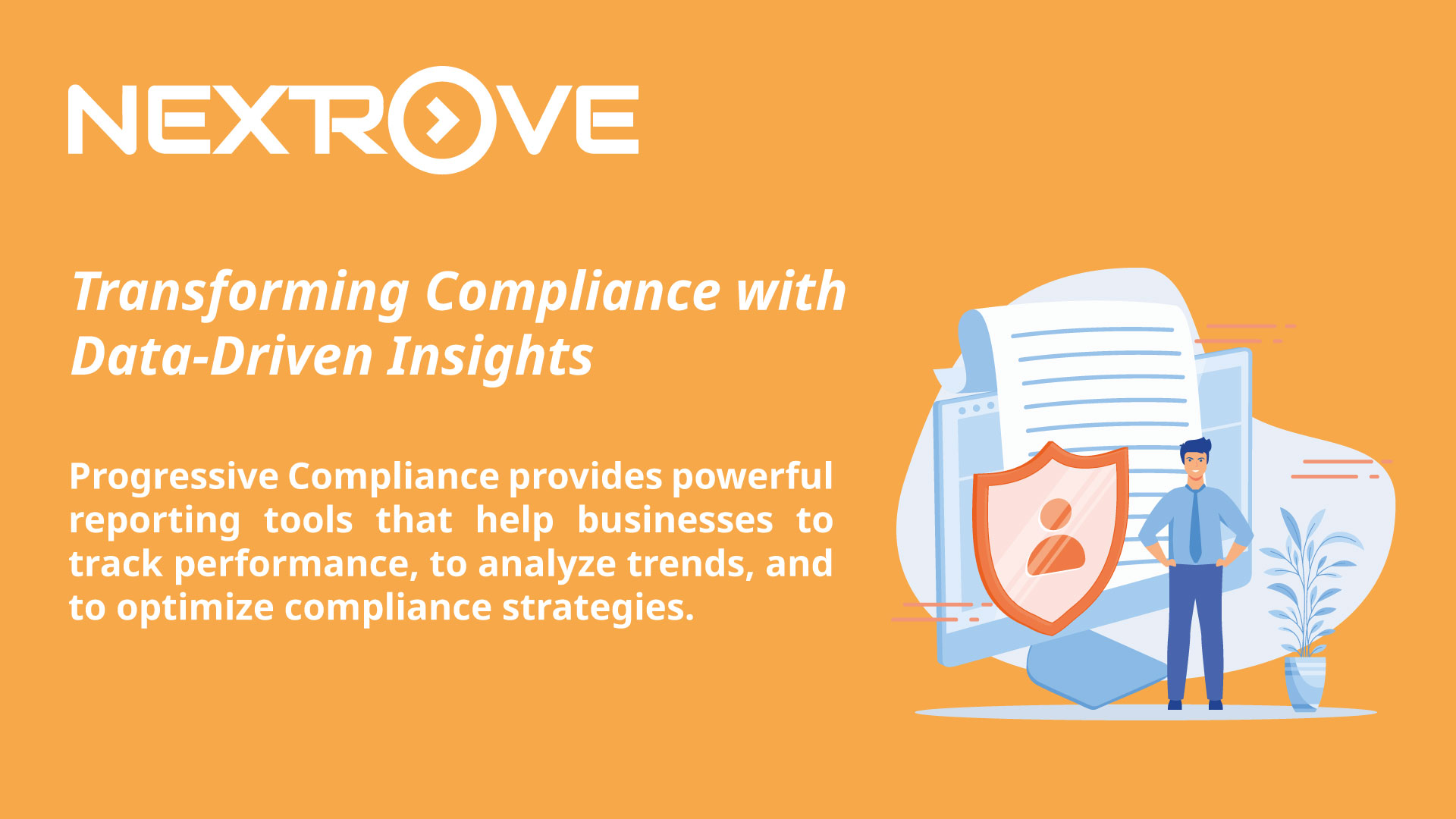Case Study: Enhancing Global Follow-Up Automation (GFA) for a leading US Pharma Company
Overview
In April 2024, a leading US Pharma Company launched the Global Follow-Up Automation (GFA), a solution that streamlined the creation and management of follow-up letters across 38 languages. After a successful launch, Phase 2 of the project was initiated in September 2024 with a focus to enhance both letter quality and tool usability, guided by users’ feedback and evolving business needs.
Objective
- Improve the quality of multilingual follow-up letters.
- Enhance the usability and editing capabilities of the tool.
- Implement prioritized change requests from the client.
Approach
Originally planned as a waterfall project, the Nextrove team adapted to client’s request for early previews of features by shifting to an agile delivery model. This allowed faster feedback loops and better stakeholder engagement.
Phased Development
Features were divided into three batches
Iterative Delivery
Each batch was developed, reviewed by the client, and refined based on feedback
Integrated Flexibility
Feedback from earlier batches influenced the development of subsequent ones
This approach allowed the client more time to finalize requirements for later changes while still staying within the overall timeline.
Challenges & Solutions
One of the key challenges in this project was balancing the need for flexibility with the discipline required to maintain control over a complex development process. While the original plan followed a more traditional waterfall methodology, expressed a strong preference for early visibility into new features — rather than waiting for the entire development cycle to complete. This request, though valuable from a user engagement perspective, introduced complexity in tracking development across multiple stages.
To address this, the Nextrove team made a strategic pivot to a more agile-inspired approach. Instead of bundling all changes into a single final release, the team divided the enhancements into three logical batches, developing and delivering each one sequentially. After each batch was deployed, the client had the opportunity to review the features, provide feedback, and suggest refinements which were then incorporated into the next round of updates.
While this iterative approach required careful coordination and meticulous change management, it ultimately allowed for more adaptive planning and stronger alignment with the client’s evolving priorities. It also gave the client team additional time to finalize their requirements for later phases, which proved especially helpful in a multilingual and highly regulated context.
Results
This flexible yet structured delivery method paid off in several important ways:
- The project was delivered on time and in accordance with the original plan, despite the mid-course shift in methodology.
- Client reported increased satisfaction with the tool’s usability, particularly the enhanced editing capabilities and overall letter quality.
- The collaborative, transparent process helped deepen the relationship with the client, reinforcing trust and paving the way for future work — including the upcoming Phase 3, which the client entrusted to the same team.
Client Feedback
The strongest validation came from client’s decision to launch Phase 3 — a significantly larger and longer initiative — and their specific request for the same project team.
Team Recognition
The success was made possible by the exceptional dedication and collaborative spirit of the team. The client specifically acknowledged the contributions of team members, highlighting not only their technical expertise, but also their responsiveness, adaptability, and commitment to excellence throughout the project lifecycle.
Shivi, Shoaib, Shubham P., Nazila, Anu, and Aparna each played a vital role in ensuring that the project met its goals — from managing complex multilingual requirements to navigating the shift toward an agile delivery approach. Their ability to stay focused under pressure, respond quickly to evolving client needs, and work cohesively was consistently recognized and appreciated by the client.
This recognition from the client reflects the strong working relationship built during the project and underscores the value of having a dedicated, cross-functional team that truly understands both the technical and business dimensions of the work. The client’s decision to request the same team for Phase 3 is a testament to the trust and confidence earned through their efforts.
Progressive Compliance Series - Episode 4: Advanced Reporting with Progressive Compliance
Transforming Compliance with Data-Driven Insights
Compliance management isn’t just about meeting deadlines—it requires insightful reporting to drive better decision-making. Progressive Compliance provides powerful reporting tools that help businesses to track performance, to analyze trends, and to optimize compliance strategies.
Key Reporting Capabilities
1. Comprehensive Draft Report Generation
- Quickly create aggregate reports that meet regulatory standards
- Reduce manual effort with pre-configured templates
2. Seamless Cloud Storage Integration
- Automatically save and organize reports in several platforms, as per client request
- Ensure secure and accessible documentation storage
3. Custom Reporting & Subscriptions
- Generate tailored reports on demand
- Schedule automated report delivery to key stakeholders
Driving Proactive Compliance Management
With these reporting capabilities, businesses can refine compliance processes, minimize risks, and enhance operational efficiency. Progressive Compliance enables organizations to move from a reactive to a proactive approach in regulatory documentation management.
What’s Next?
In an ever-evolving regulatory landscape, Progressive Compliance is the solution for organizations looking to stay ahead. Reach out now to requesto a demo
Progressive Compliance Series - Episode 3: Automating Compliance Workflows for Maximum Efficiency
The Power of Automation in Aggregate Reports Management
Manual processes are inefficient, prone to errors, and time-consuming. Progressive Compliance leverages intelligent automation to streamline generation and submission of aggregate reports ensuring accuracy and efficiency.
How Automation Works
1. Intelligent Task Assignment & Alerts
- Assigns tasks to the right team members based on compliance needs
- Sends proactive alerts to keep teams informed and on schedule
- Generates and integrates required data
2. Automatic Submission Record Creation
- Automatically generates submission records as deadlines approach
- Eliminates oversight and ensures timely regulatory submissions
3. Personalized Task Dashboards
- Provides real-time task tracking and performance insights
- Enables employees to prioritize and manage their workload effectively
Enhancing Efficiency & Strategic Focus
By automating routine tasks, Progressive Compliance reduces manual workload and allows teams to focus on strategic initiatives.
What’s Next?
In an ever-evolving regulatory landscape, Progressive Compliance is the solution for organizations looking to stay ahead.
In our final article, we’ll explore how Progressive Compliance integrates with advanced reporting and data analytics to enhance decision-making.



